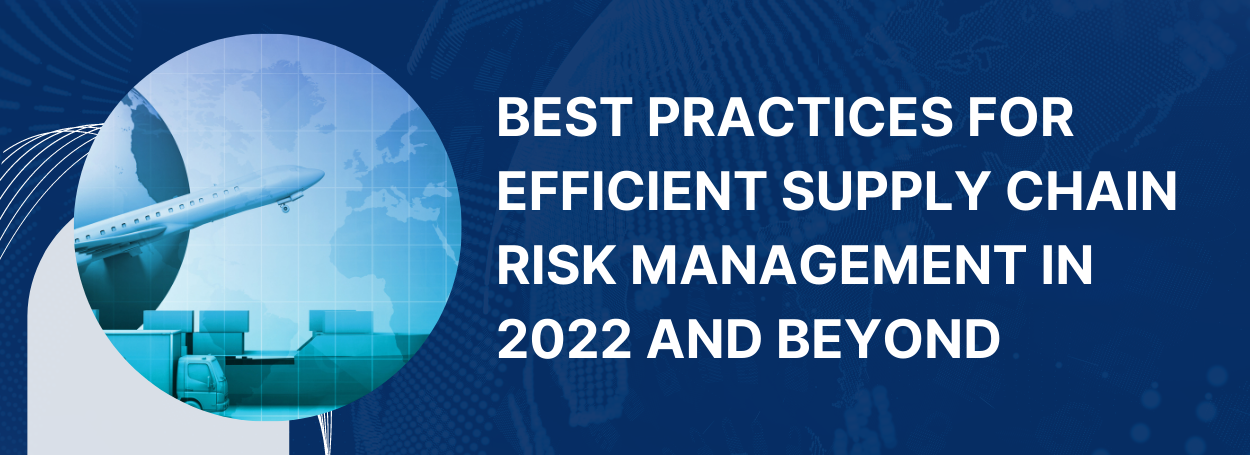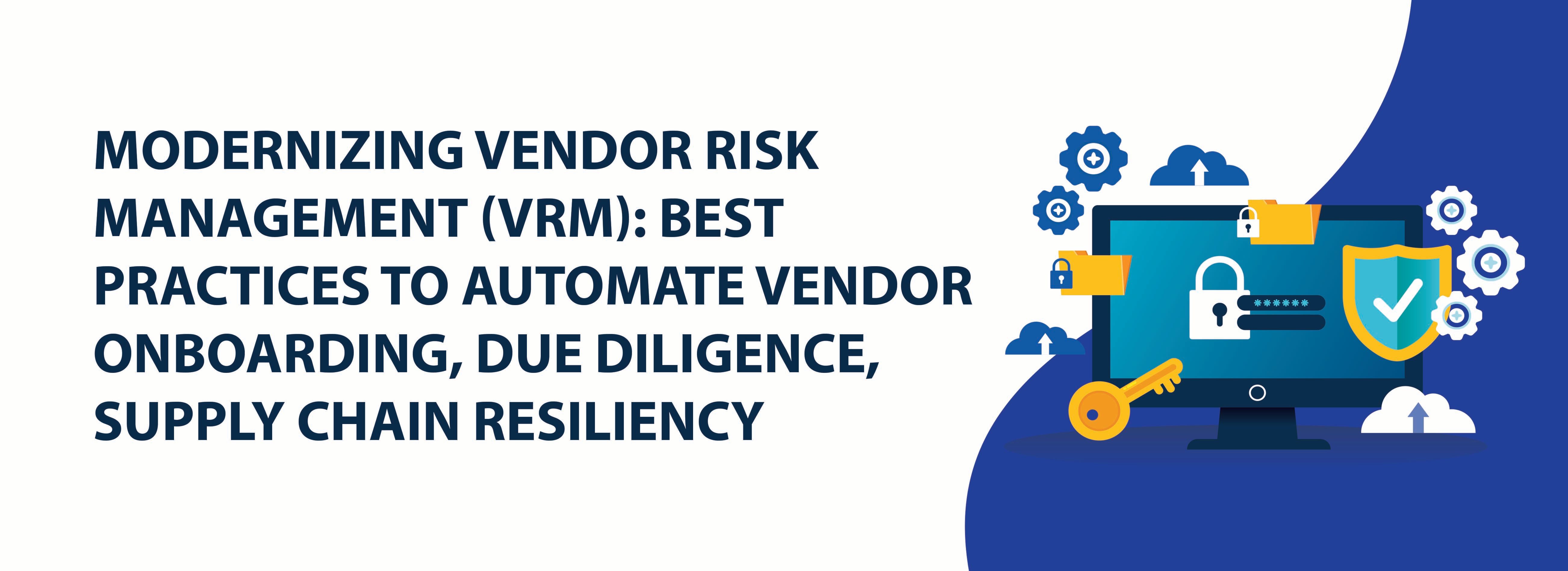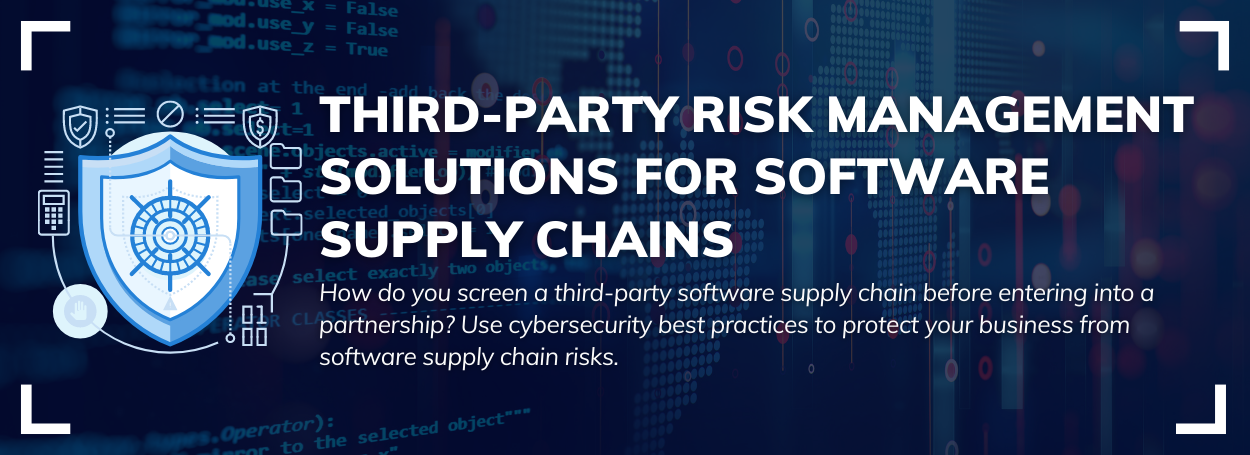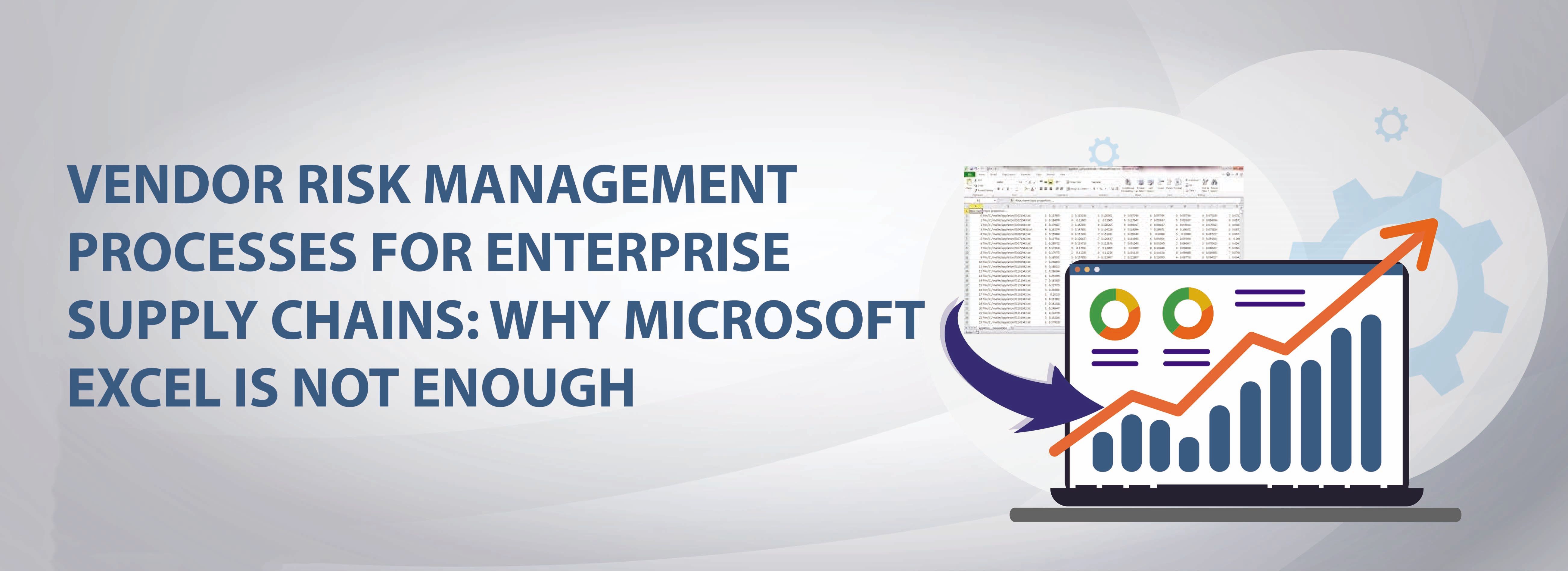Best Practices for Efficient Supply Chain Risk Management in 2022 and Beyond

Modern-day supply chains are highly interconnected and highly complex. In this landscape, supply chain disruptions have become common due to a range of factors like:
- Trade disputes
- Inventory shortages
- Geopolitical uncertainties
- Natural disasters and pandemics
- Environmental concerns and climate change
- Regulatory and compliance risks
- Cyberattacks
Such disruptions can have a massive impact on every entity involved in the global supply chain, both upstream and downstream. That’s why it’s critical for companies to assess and manage the risks that may lead to such disruptions.
According to one Gartner survey, 87% of organizations plan to invest in supply chain resiliency within the next two years. Companies recognize that supply chain resiliency is vital to their ongoing sustainability and success.
This article explores four ways your organization can build this resiliency by assessing supply chain risks, preparing for disruptions, and making your supply chain risk-ready.
What Is Supply Chain Risk?
Supply chain risk is any risk that impedes the flow of information, raw materials, or end products, disrupts the production lifecycle, and prevents your organization from achieving its objectives.
For example, you may use third-party software to support your day-to-day operations or open-source components to create customized software applications. Either way, vulnerabilities in components or applications may be exploited by bad actors to launch a cyberattack against your organization. This is only one kind of supply chain risk.
The well-known Equifax attack is a prime example of a cyberattack resulting from unpatched vulnerabilities in third-party software. Equifax is one of the largest credit reporting agencies in the U.S., so a data breach on its IT systems could be catastrophic. And indeed, it was, as Equifax discovered in 2017.
Clever attackers successfully exploited an open flaw in a third-party software used by the company to steal the personal data of 147 million Equifax customers. The incident set Equifax back by a whopping $700 million in fines, settlements, and claims.
Your supply chain ecosystem may also be vulnerable to such risks. That’s why it’s critical to understand these and other risks that may exist. More importantly, you must counteract vulnerabilities and shore up your defenses. This article will explore some supply chain strategies to do precisely that.
#1. Improve Visibility into Your Supply Chain
The supply chain risk landscape is continuously evolving, and the scale of supply chain risk has increased by many magnitudes over the past few years. Visibility is crucial to effectively manage these risks and minimize supply chain disruptions.
When you have end-to-end visibility into each aspect of your supply chain, you can:
- Identify the most critical risks
- Find and address areas of performance weaknesses
- Build upon the supply chain’s strengths
- Plan and implement digital transformation initiatives
Visibility helps you leverage opportunities for cost optimization, plan for future growth, and gain a competitive advantage. It will also enable you to leverage high-quality, insightful data for making impactful, data-driven decisions to improve customer experiences and satisfaction.
To get this visibility, you should:
Establish Clearly-Defined Communication Interfaces
Clearly-defined interfaces between the supply chain leaders, risk managers, and other functions like marketing, IT, and legal enable them to quickly exchange information. Swift communication improves decision-making and reaction times amid disruptions.
Monitor Trends and Events
It’s not enough to simply know about your supply chain. It’s also crucial to monitor local, national, and global supply chain trends and events that may cause disruptions or even create a supply chain crisis. Keep an eye on these incidents and new risks. Continuously analyze the possible implications on your supply footprint.
#2. Implement a Third-Party Risk Management (TPRM) Program
Third parties and service providers like vendors, suppliers, and outsourcing partners can help your company improve operational efficiency, lower costs, and achieve economies of scale. However, they also create supply chain risks.
For one, they increase cybersecurity risk, particularly data breaches. And this is already happening. According to one 2020 report, 53% of organizations experienced at least one data breach caused by a third party. Moreover, each breach set them back by $7.5 million in average remediation costs.
Third parties also introduce legal, compliance, financial, strategic, and reputational threats. The more third parties you work with, the higher the scale and scope of such risks.
A third-party risk management (TPRM) program is crucial to manage, mitigate and prevent risks arising from third-party relationships. TPRM encompasses third-party risks, as well as any risks that could be created by fourth parties, i.e., your vendors’ vendors.
You have to take deliberate actions to strengthen your TPRM program and effectively address these supply chain risks.
Monitor All Vendors
Set up a vendor database to increase transparency around risks and issues throughout your supply chain. It should be updated regularly and contain various information about each vendor:
- Location
- Performance
- Audit results
- Fourth parties
It’s best to use a software like Vendor360 to streamline and simplify the effort.
Create a Vendor Management Policy
As your vendor network expands, a vendor management policy will become essential. It outlines how vendors access, manage, and process your data and other assets. It ensures that only authorized representatives can handle your data. It also helps you define and implement solid controls and procedures to minimize the impact of a data breach.
These controls and procedures can help you effectively manage risks by streamlining:
Vendor due diligence
Service level agreements (SLAs)
Vendor regulatory compliance
Security policies
Breach procedures
Business continuity
Assess Vendor Risk
Determine which third parties have access to your network and sensitive data. Then, assess the risks you might incur from them. Assign a “risk score” to each vendor and accordingly categorize them as high-risk, medium-risk, or low-risk. Add this information to your vendor database. Keep it updated as your vendors – or the risk associated with each – change.
#3. Leverage Automation and Digitization
Supply chain risk management (SCRM) involves the identification, assessment, and mitigation of supply chain risks. SCRM plays a vital role in helping companies (including small businesses) operate more efficiently with minimal disruptions or downtime in the current risk landscape.
To boost your SCRM function, it’s best to use digital tools. Using SCRM software, third-party risk management software like Vendor360, and automation technologies, you can increase the efficiency of your supply chain, whether it’s order intake, shipping, inventory management, warehousing, or order fulfillment.
You can centralize workflows, improve visibility, and track every process from start to end. Plus, you can gather critical metrics and real-time data to measure performance, find and address procedural gaps, optimize spend, and improve decision-making. Data can also help you break down unnecessary silos across the value chain.
Some SCRM programs also offer advanced analytics and artificial intelligence (AI) capabilities, so you can:
- Create accurate predictions
- Identify bottlenecks in the supply chain
- Forecast risks before they can become serious threats
Ultimately, you can leverage these capabilities to create contingency plans to mitigate risks and protect the organization during emergencies.
#4. Perform Regular Risk Assessments
Ongoing risk identification and assessments are crucial for efficient supply chain risk management. Identify the risks that may disrupt your supply chain operations and assess their risk probabilities.
Evaluate both existing risks like price, quality, legal or reputational risks, as well as emerging risks, like cyberattacks and environmental challenges like greenhouse gas emissions (or laws around them).
Create a risk heat map with likelihood on the horizontal axis and impact on the vertical axis. Use this map to analyze various supply chain risks, classify them, and prioritize them for action.
After prioritization, determine the appropriate response strategy to minimize possible disruptive consequences if that risk is realized. You can create meaningful business case studies as the basis of driving investment for these risk response strategies.
Make sure that prioritization is not based on financial considerations alone. Don’t forget to look at regulatory and strategic factors. The company’s risk appetite and risk tolerance must also be taken into account.
You can develop reactive and proactive response strategies to manage each supply chain risk based on understanding these realities.
Manage Vendor Risks in Your Supply with Vendor360
As we have already seen, third and fourth parties are a significant source of supply chain risk. To maintain the health and resilience of your supply chain, it’s vital to gain control over your vendor risk management process. And Vendor360 from CENTRL can help you do exactly that.
Vendor360 is an advanced risk management platform to manage and mitigate third-party risks. With this software, you can easily manage new vendor onboarding and automate vendor assessments. You will benefit from a centralized vendor directory to aggregate and maintain vendor data.
Centralization also helps you segment vendors into risk tiers based on criticality and inherent risk, so you can plan and implement appropriate risk responses. Vendor360 streamlines pre-contract risk analysis for new vendors through surveys and questionnaires. Inherent risk is easily monitored for each vendor at the engagement, product, and service levels.
Automate ongoing risk assessments, audits, and monitoring with Vendor360 and beef up your supply chain risk management program.
To try Vendor360 for yourself, schedule a free demo. Email info@centrl.ai to get started.


